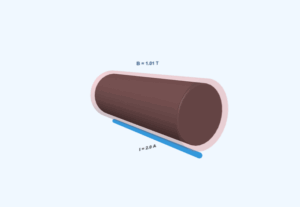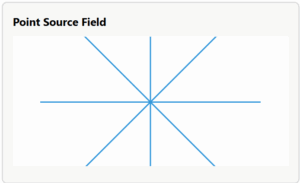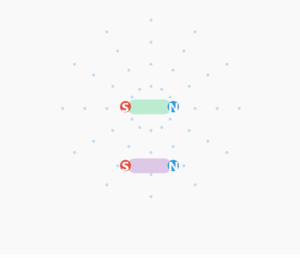Magnetic Field Concepts
Example 5.4: Exploring Magnetic Field Properties
This interactive simulation explores key concepts about magnetic fields and their behavior.
Key Principles Illustrated
1. Magnetic force is always perpendicular to both velocity and field (F = qv×B)
2. Gauss's law for magnetism: ∮B·ds = 0 (no magnetic monopoles)
3. Toroids confine field lines completely, while solenoids cannot
4. Systems can have magnetic moments even with zero net charge
Example
Question:
(a) Magnetic field lines show the direction (at every point) along which a small magnetised needle aligns. Do the magnetic field lines also represent the lines of force on a moving charged particle at every point?
(b) If magnetic monopoles existed, how would the Gauss’s law of magnetism be modified?
(c) Does a bar magnet exert a torque on itself due to its own field? Does one element of a current-carrying wire exert a force on another element of the same wire?
(d) Magnetic field arises due to charges in motion. Can a system have magnetic moments even though its net charge is zero?
Solution:
(a) No. The magnetic force is always normal to \(\mathbf{B}\) (\(\mathbf{F} = q\mathbf{v} \times \mathbf{B}\)). It’s misleading to call magnetic field lines as lines of force.
(b) Gauss’s law of magnetism states the flux of \(\mathbf{B}\) through any closed surface is always zero:
\[
\oint_S \mathbf{B} \cdot d\mathbf{s} = 0
\]
If monopoles existed, right-hand side would equal monopole charge \(q_m\) enclosed by \(S\):
\[
\oint_S \mathbf{B} \cdot d\mathbf{s} = \mu_0 q_m
\]
(c) No. There is no force or torque on an element due to the field produced by itself. But there is a force (or torque) on an element of the same wire (except for a straight wire, where force is zero).
(d) Yes. The average charge may be zero, but mean magnetic moment due to current loops may not be; for instance, in paramagnetic materials with zero net charge but nonzero net dipole moment.



